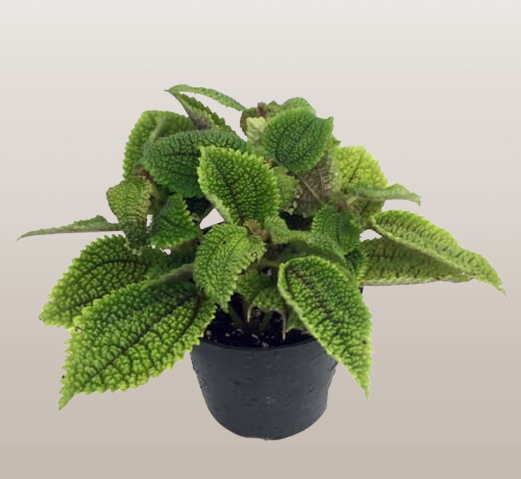Friendship Plant

Scientific name: Pilea involucrata
☘️ Toxicity: Safe for cats
☀️ Ideal light: Medium to bright, always indirect
💧 Watering: Frequent; keep the soil lightly moist
The Friendship Plant is a small tropical species with textured bronze-green leaves, often grown in terrariums and humid indoor spaces. It thrives in well-ventilated, moderately humid environments and is completely non-toxic to cats, making it a perfect choice for cozy, pet-friendly interiors.
Essential care
- Light: Prefers filtered or diffused light; avoid direct sun that may burn leaves.
- Water: Keep soil consistently moist but not soggy; water when the surface starts to dry.
- Humidity: Medium to high humidity — ideal for bathrooms or terrariums with ventilation.
- Substrate: Light and well-draining (mix of potting soil, perlite, and coconut fiber).
- Fertilization: Monthly in spring and summer using a balanced diluted fertilizer (NPK 10-10-10).
- Environment: Prefers temperatures between 18–26 °C (64–79 °F); sensitive to cold drafts.
Pests and how to handle them
- Mites: Increase humidity and clean leaves with a damp cloth.
- Scale insects: Remove manually using cotton dipped in 70% alcohol or apply neem oil.
- Fungal issues: Prevent waterlogging and ensure proper ventilation.
Propagation
- Stem cuttings: Take 2–3 node cuttings and root them in water or moist substrate.
- Division: Possible during repotting by separating healthy clumps.
Cat safety
- Classification: Listed as non-toxic to cats by the ASPCA.
- Best practice: Even though it’s safe, keep it out of reach to prevent playful damage to the delicate foliage.
💡 Known as the “Friendship Plant” because it’s easy to propagate and often shared among friends as a symbol of connection and care.
Frequently asked questions
- Why are the leaves wilting? Likely lack of water or low humidity; adjust watering and mist occasionally.
- Why are the leaves pale? Insufficient light; move to a brighter indirect location.
- Can it grow in a closed terrarium? Yes, as long as it’s occasionally aired out to prevent fungal growth.
Quick checklist
- ☀️ Bright filtered light
- 💧 Keep soil lightly moist
- 🌫️ Prefers moderate humidity
- 🪴 Light, airy substrate
- 🐾 Safe for cats